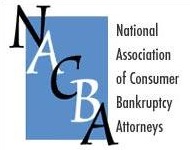 When I trip over the same issue three times in a week, it’s time to discuss it here.
When I trip over the same issue three times in a week, it’s time to discuss it here.
In my office, it came up when I spotted a creditor on Schedule D with a lien on a pleasure boat. Only problem was that no boat was listed on Schedule B; it belonged to the debtor’s corporation.
It surfaced on a list serve when the question turned on tax liens on 401(k) accounts.
Then, we saw it when our client remained liable for the mortgage on the home that went to his ex wife in the divorce.
Can you see what each of these fact patterns has in common? (Come on, pretend this is Sesame Street!)
Answer: each lien doesn’t attach to property of the bankruptcy estate.
It comes down to this truism: liens are not the same as secured claims.
You can’t have a secured claim without a lien of some sort but the fact that there is a lien does not necessarily mean you are looking at a secured claim in a bankruptcy case.
Let’s go back to the statute, §506:
An allowed claim of a creditor secured by a lien on property in which the estate has an interest… is a secured claim to the extent of the value of such creditor’s interest in the estate’s interest in such property…
In the case of the boat, the debtor didn’t own it, thus it didn’t come in to the estate.
In the case of the 401(k), it belongs to the debtor but is excluded from the bankruptcy estate by §541 and the holding of Patterson v. Shumate. The Ninth Circuit held in Snyder that a Chapter 13 plan can’t pay off a lien on the ERISA qualified retirement plan that wasn’t property of the estate.
In the case of the divorced man, he no longer owned the property by reason of the division of property with his ex.
This precept is also useful in thinking about lien stripping: you can only value a lien in a bankruptcy case to the extent it attaches to the debtor’s interest in property. Thus, I believe, you can’t strip a lien on a co owner’s interest in property where the co owner isn’t a debtor in bankruptcy. The co owner’s interest isn’t property of the estate and whatever interest the lienholder has on the co owner’s interest, it isn’t a secured claim in the debtor’s case.
Image courtesy of topsy@waygood







